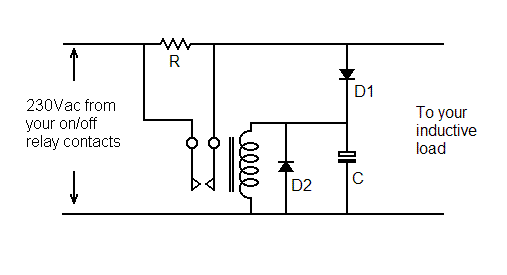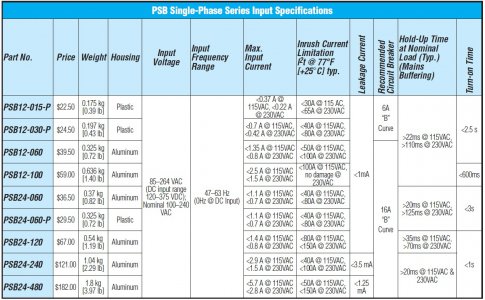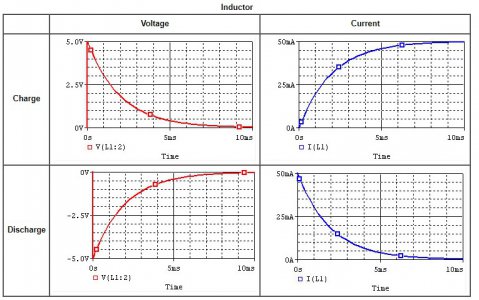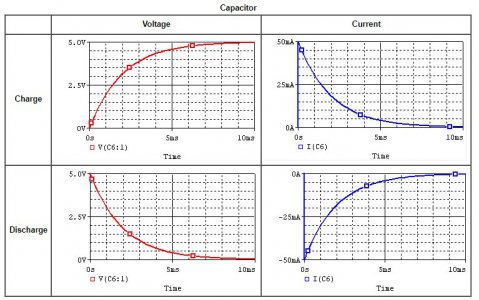-
Welcome back Guest! Did you know you can mentor other members here at H-M? If not, please check out our Relaunch of Hobby Machinist Mentoring Program!
You are using an out of date browser. It may not display this or other websites correctly.
You should upgrade or use an alternative browser.
You should upgrade or use an alternative browser.
PM30 Conversion Video - Control Panel
- Thread starter AdamDee
- Start date
- Joined
- Jun 12, 2014
- Messages
- 4,808
High inrush current from the transformer, I would suggest either switching to a 15A dual pole breaker with a D curve or trying a different brand of slow blow 15A fuses and/or consider 20A. I have a number of amps that have very large transformers with DC capacitor banks and use a thermistor to limit the current inrush. The lights still dim when turned on. Problem is they need to be sized correctly for your operating current.
Nice looking setup.
Nice looking setup.
Many years ago on a larger power supply for a very high power (3-4 kilowatt) ham radio amplifier I faced the same problem. I solved it by adding a series resistor to limit the initial inrush current and a relay that shorts the resistor out after the initial high current drops.
Here is a diagram that uses DC relay.

I used a 220v AC relay so I did not need the diodes and the capacitor. You can probably use a 25 ohm resistor, use a small metal high wattage (25-50 watt) type resistor. You will get a delay of 2-4 seconds.
16 amp fuse/breaker is way too big for a 900 watt transformer, it is an indication that something is wrong. Toroidal transformers are known to be able to pass high current for a short time.
Ariel
Here is a diagram that uses DC relay.

I used a 220v AC relay so I did not need the diodes and the capacitor. You can probably use a 25 ohm resistor, use a small metal high wattage (25-50 watt) type resistor. You will get a delay of 2-4 seconds.
16 amp fuse/breaker is way too big for a 900 watt transformer, it is an indication that something is wrong. Toroidal transformers are known to be able to pass high current for a short time.
Ariel
Wow thank you for this detailed explanation! This might be the move. Have you heard of people using NTC thermistors in series with the primary coil to achieve this same kind of inrush protection?
ive got a 15A fuse on the 60VAC side, so I figured going to a 15A fuse on the 220VAC side wouldn’t be too risky.... but not 100% sure if my thinking is right on that one.
ive got a 15A fuse on the 60VAC side, so I figured going to a 15A fuse on the 220VAC side wouldn’t be too risky.... but not 100% sure if my thinking is right on that one.
Thanks for the reply! I Was on Amerherm’s website yesterday, looking at sizing a thermistor. I struggled there because one of the inputs to their “thermistor selection calculator” was the capacitance of the circuit you’re trying to protect, and I’ve got no idea... I don’t have any capacitors on the circuit right now. I’ve got the 60VAC side disconnected from the drivers. It is an open circuit right now while I’m trying to get this all dialed in.High inrush current from the transformer, I would suggest either switching to a 15A dual pole breaker with a D curve or trying a different brand of slow blow 15A fuses and/or consider 20A. I have a number of amps that have very large transformers with DC capacitor banks and use a thermistor to limit the current inrush. The lights still dim when turned on. Problem is they need to be sized correctly for your operating current.
Nice looking setup.
- Joined
- Jun 12, 2014
- Messages
- 4,808
Breakers protect the wiring, to a lesser degree the components, basically to mitigate short circuit situations with wire failure/short. Even small power (60-480W) DC supplies specify a minimum of a 16A breaker, when fusing. If you look at something like VFDs cartridge fuses are often rated at 1.5-2X the rated input, a breaker is specified as 125-150% and that is with a soft start and an in-line resistor on power up. Alternative you could use a time delay relay that would short out an inline resistor as noted above, you can get programmable time relays and using something like 3 seconds. These may also be required if you are charging a large bank of capacitors after the transformer.
I would also look at specific fuses designed for high in-rush currents such as the LittleFuse KLDR, I still would recommend a 15-20A fuse with an internal transformer supply wiring of a minimum of 14AWG 90C rated.

I would also look at specific fuses designed for high in-rush currents such as the LittleFuse KLDR, I still would recommend a 15-20A fuse with an internal transformer supply wiring of a minimum of 14AWG 90C rated.

Attachments
Yes, but they have an inherent limitation of adding some resistance and power dissipation even in steady state. I don't like it in high current circuits as it increases the chance of failure and you have to make sure that the steady state power dissipation of the thermistor is taken care of (sometimes it is glued to the chassis/heatsink with non-conductive thermal epoxy to help dissipate the heat.)Have you heard of people using NTC thermistors in series with the primary coil to achieve this same kind of inrush protection?
15 amp x 230 volt = 3,450 Watt. Too big to protect the circuits/transformer in steady state. This is a good reasonable size for electrical panel breaker to protect #14 wires in the wall.ive got a 15A fuse on the 60VAC side, so I figured going to a 15A fuse on the 220VAC side wouldn’t be too risky.... but not 100% sure if my thinking is right on that one.
The circuit with the relay (use an AC relay, no diodes or capacitors needed) is simple and effective. It will kick in only after the capacitors on the other side are charged (or the transformer inrush current is reduced). It is a closed loop circuit, no timers to rely on or adjust.
Ariel
- Joined
- May 2, 2018
- Messages
- 144
I don't believe the transformer is the problem.
An inductor (i.e. transformer) does not have a high inrush current.
An inductor opposes a change in current.
This is why they are used in power supplies for filtering a DC voltage.
The initial impedance of an inductor is infinite and the initial current is zero.
Look at the current charge curve for an inductor.

The charge curve for a capacitor is the opposite of an inductor.
I would believe that the issue is something else.

An inductor (i.e. transformer) does not have a high inrush current.
An inductor opposes a change in current.
This is why they are used in power supplies for filtering a DC voltage.
The initial impedance of an inductor is infinite and the initial current is zero.
Look at the current charge curve for an inductor.

The charge curve for a capacitor is the opposite of an inductor.
I would believe that the issue is something else.

- Joined
- Mar 26, 2018
- Messages
- 2,724
Many years ago on a larger power supply for a very high power (3-4 kilowatt) ham radio amplifier I faced the same problem. I solved it by adding a series resistor to limit the initial inrush current and a relay that shorts the resistor out after the initial high current drops.
Interestingly enough, this is identical to how most AC motor drives and servo drives work. There is a "precharge resistor" which limits the inrush to the drive, mainly to protect the bus capacitors from hard cycling. Once the DC bus has charged, the resistor is bypassed by a relay. There is a real reason to avoid rapidly power cycling drives which is to prevent thermal damage to this resistor.
Thanks for this educational post! You're obviously much better with this stuff than I am. I can't speak for all transformers, but I have seen from many different sources that toroidal transformers specifically are bad for high inrush currents.I don't believe the transformer is the problem.
An inductor (i.e. transformer) does not have a high inrush current.
An inductor opposes a change in current.
This is why they are used in power supplies for filtering a DC voltage.
The initial impedance of an inductor is infinite and the initial current is zero.
Look at the current charge curve for an inductor.
View attachment 317314
The charge curve for a capacitor is the opposite of an inductor.
I would believe that the issue is something else.
View attachment 317315

